How to Fill Tractor Tires with Water
Liquid ballast is essential for maintaining your tractor's tire pressure and increasing its traction. Although of the most common liquid ballasts to fill a tire with is water, you can also use antifreeze, calcium chloride, or polyurethane...
Part 1 of 3:
Choosing a Liquid Ballast
-
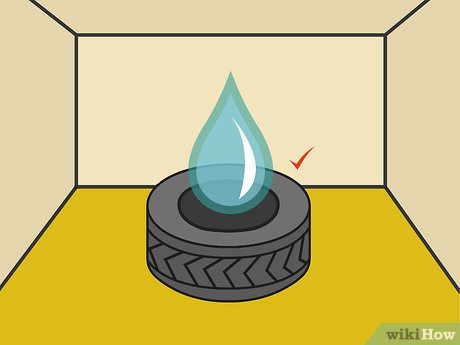 How to Fill Tractor Tires with Water Picture 1 Use water for the most inexpensive ballast option. Water is the most popular liquid ballast because it is cheap and plentiful. If you have a lot of tractor tires to fill or want to save money, water is probably your best option.[1]
How to Fill Tractor Tires with Water Picture 1 Use water for the most inexpensive ballast option. Water is the most popular liquid ballast because it is cheap and plentiful. If you have a lot of tractor tires to fill or want to save money, water is probably your best option.[1]- Avoid using water in weather with temperatures below 32 °F (0 °C), as your liquid ballast may freeze and weigh down the tire.
-
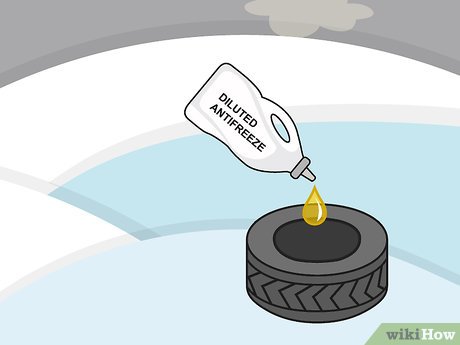 How to Fill Tractor Tires with Water Picture 2 Fill your tires with diluted antifreeze in cold weather. In cold, wintery climates, antifreeze can keep your ballast from freezing. Mix water with antifreeze in a 50/50 ratio to prevent your ballast from weighing down your tractor when temperatures drop.[2]
How to Fill Tractor Tires with Water Picture 2 Fill your tires with diluted antifreeze in cold weather. In cold, wintery climates, antifreeze can keep your ballast from freezing. Mix water with antifreeze in a 50/50 ratio to prevent your ballast from weighing down your tractor when temperatures drop.[2]- Choose non-toxic antifreeze in case your ballast leaks and comes in contact with plants or animals.
- Antifreeze can keep liquid ballast from solidifying in temperatures down to −40 °F (−40 °C).[3]
-
 How to Fill Tractor Tires with Water Picture 3 Try calcium chloride ballast in extreme cold temperatures. Calcium chloride is the best liquid ballast for climates where temperatures drop as low as −50 °F (−46 °C). Mix calcium chloride flakes with water in a ratio suggested by its packaging for a cheap, freeze-resistant ballast solution.[4]
How to Fill Tractor Tires with Water Picture 3 Try calcium chloride ballast in extreme cold temperatures. Calcium chloride is the best liquid ballast for climates where temperatures drop as low as −50 °F (−46 °C). Mix calcium chloride flakes with water in a ratio suggested by its packaging for a cheap, freeze-resistant ballast solution.[4]- Calcium chloride is, however, more likely to rust the metal parts of tractor tires.[5]
-
 How to Fill Tractor Tires with Water Picture 4 Choose polyurethane foam for an effective, yet expensive ballast option. Polyurethane foam is a common liquid ballast with a sturdy weight. Because you have to hire a mechanic to fill the tires, however, it is pricier than most ballast options.[6]
How to Fill Tractor Tires with Water Picture 4 Choose polyurethane foam for an effective, yet expensive ballast option. Polyurethane foam is a common liquid ballast with a sturdy weight. Because you have to hire a mechanic to fill the tires, however, it is pricier than most ballast options.[6]- Do not attempt to fill tires with polyurethane foam yourself, as it will be more likely to leak while your tractor moves.
Part 2 of 3:
Adding Ballast to Tires
-
 How to Fill Tractor Tires with Water Picture 5 Turn the tire on its side with the valve core facing up. To fill tractor tires with liquid, you will need a clear view of the valve core, or the metal cylindrical object protruding from the tire's inner side. Rotate the tire until the valve core is facing upward and you have clear, easy access to it while you work.[7]
How to Fill Tractor Tires with Water Picture 5 Turn the tire on its side with the valve core facing up. To fill tractor tires with liquid, you will need a clear view of the valve core, or the metal cylindrical object protruding from the tire's inner side. Rotate the tire until the valve core is facing upward and you have clear, easy access to it while you work.[7]- If the tire is currently attached to the tractor, use a car jack to lift the tractor and turn the wheel as needed or remove the tire.[8]
-
 How to Fill Tractor Tires with Water Picture 6 Unscrew the valve core from the tire. Hold the valve core between your fingers and loosen it by turning it in a counterclockwise rotation. Continue turning until you completely remove the valve core and expose the air/liquid adaptor underneath.[9]
How to Fill Tractor Tires with Water Picture 6 Unscrew the valve core from the tire. Hold the valve core between your fingers and loosen it by turning it in a counterclockwise rotation. Continue turning until you completely remove the valve core and expose the air/liquid adaptor underneath.[9]- If the tire deflates, you have successfully removed the valve core.
- Set the valve core aside somewhere safe so you can reattach it later.
-
 How to Fill Tractor Tires with Water Picture 7 Attach a tire hose to the air/liquid adaptor. Tire hoses are small hoses that attach from a liquid supply to your tire. Attach one end of the liquid hose to your liquid supply, then screw the hose over the air/liquid adaptor by turning it in counterclockwise motions until it is too tight to twist any further.[10]
How to Fill Tractor Tires with Water Picture 7 Attach a tire hose to the air/liquid adaptor. Tire hoses are small hoses that attach from a liquid supply to your tire. Attach one end of the liquid hose to your liquid supply, then screw the hose over the air/liquid adaptor by turning it in counterclockwise motions until it is too tight to twist any further.[10]- You can buy tire hoses online or from some agricultural supply stores.
-
 How to Fill Tractor Tires with Water Picture 8 Fill the tires up to 75% through the tire hose. By turning on the supply that the hose is attached to (like a home water supply) or tilting the liquid supply, fill the tire with liquid ballast. To fill the tire to the industry standard of 75%, rotate the tire until the air/liquid adaptor is facing directly up and fill to the stem.[11]
How to Fill Tractor Tires with Water Picture 8 Fill the tires up to 75% through the tire hose. By turning on the supply that the hose is attached to (like a home water supply) or tilting the liquid supply, fill the tire with liquid ballast. To fill the tire to the industry standard of 75%, rotate the tire until the air/liquid adaptor is facing directly up and fill to the stem.[11]- After filling the tire, unscrew the hose and replace it with the valve core.
- Repeat this process for each of the following 4 tires and, if you removed them, reattach them to the tractor.
Part 3 of 3:
Removing Liquid from Tires
-
 How to Fill Tractor Tires with Water Picture 9 Place a basin under the valve stem before removing liquid from the tire. Depending on the tire size, you may need to remove several gallons of liquid ballast. Choose a place outdoors, perhaps in dirt or a field, where you can let the liquid out of the tire.
How to Fill Tractor Tires with Water Picture 9 Place a basin under the valve stem before removing liquid from the tire. Depending on the tire size, you may need to remove several gallons of liquid ballast. Choose a place outdoors, perhaps in dirt or a field, where you can let the liquid out of the tire.- Only let liquid ballast run into the ground if you use water as ballast. For calcium chlorinate, antifreeze, or polyurethane foam, remove the valve core over a large bucket or basin.
-
 How to Fill Tractor Tires with Water Picture 10 Rotate the tire until the valve core is facing down. While removing liquid from the tire, you'll want the valve core facing downward so it runs directly into the ground. Turn the tire until the valve core is pointing towards the ground before taking off the valve core.[12]
How to Fill Tractor Tires with Water Picture 10 Rotate the tire until the valve core is facing down. While removing liquid from the tire, you'll want the valve core facing downward so it runs directly into the ground. Turn the tire until the valve core is pointing towards the ground before taking off the valve core.[12]- If the tire is attached to the tractor, use a car jack to lift away the weight pressure and rotate the tire as needed.[13]
-
 How to Fill Tractor Tires with Water Picture 11 Remove the valve core. Hold the valve core, the metal cylindrical object attached to the tire's inner side, between your fingers and twist it in a counterclockwise motion. Continue twisting the valve core until you remove it completely and expose the air/liquid adaptor.[14]
How to Fill Tractor Tires with Water Picture 11 Remove the valve core. Hold the valve core, the metal cylindrical object attached to the tire's inner side, between your fingers and twist it in a counterclockwise motion. Continue twisting the valve core until you remove it completely and expose the air/liquid adaptor.[14]- Set the valve core aside somewhere safe so you can reattach it afterward.
- Once you've removed the valve core, the tire should start leaking liquid.
-
 How to Fill Tractor Tires with Water Picture 12 Allow all of the liquid to run out of the tire. To completely reset the tire's pressure, wait until the tire empties itself of all the liquid it contained into the ground or basin. From there, you can either screw the valve cap back on or, if you're currently using the tire, refill it to the desired pressure.
How to Fill Tractor Tires with Water Picture 12 Allow all of the liquid to run out of the tire. To completely reset the tire's pressure, wait until the tire empties itself of all the liquid it contained into the ground or basin. From there, you can either screw the valve cap back on or, if you're currently using the tire, refill it to the desired pressure.- Repeat this process for each of the tractor's 4 tires and, if you removed them to lower the ballast pressure, reattach them.
4 ★ | 1 Vote
You should read it
- How to Remove a Tractor Tire from the Rim
- How to Put Air in a Tire
- How to Get a Tire Off a Rim
- Strange: Pumping car tires with fire
- Why do airplanes almost never have a flat tire?
- How to Replace an RV Waste Valve Handle
- Goodyear invented a new tire that never needs to be replaced, the tire surface has the ability to regenerate itself
- What is tire pressure sensor? Should I install it in a car?
- Successfully formulated, programmable, liquid metal fabrication that can conduct electricity
- Valve does not block the use of AI, but will reject games that use AI that violate copyright
- Liquid heat sink
- Terrified, watching the gruesome black liquid 'creep' into its skull
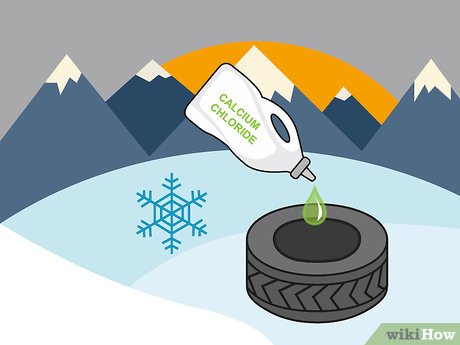
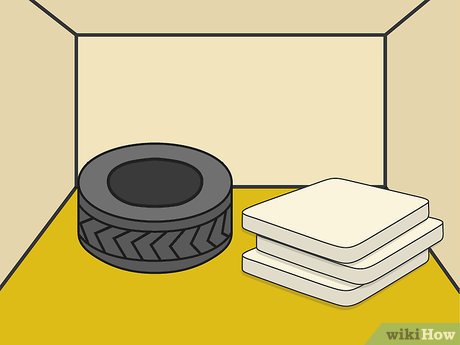
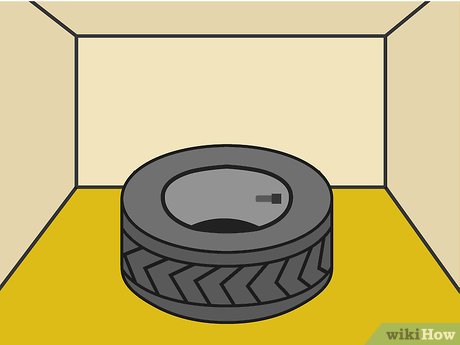
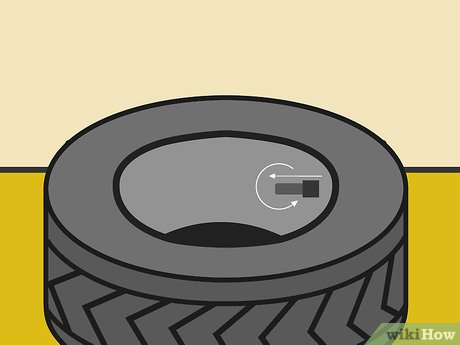
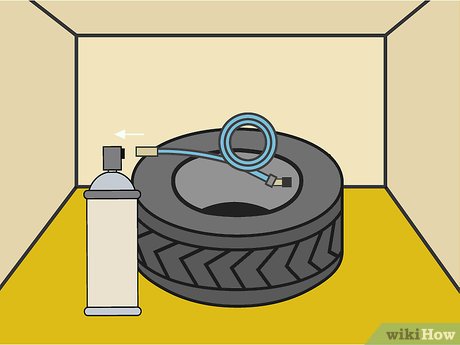
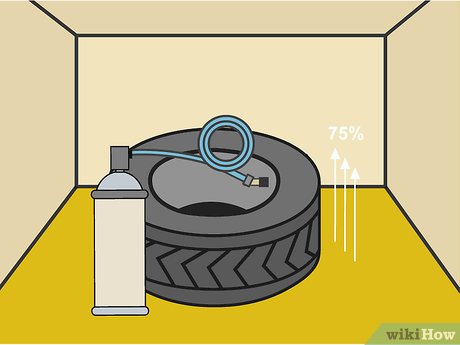
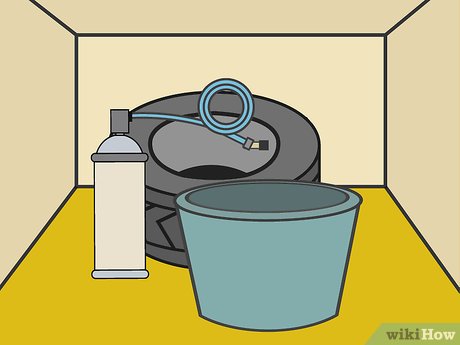
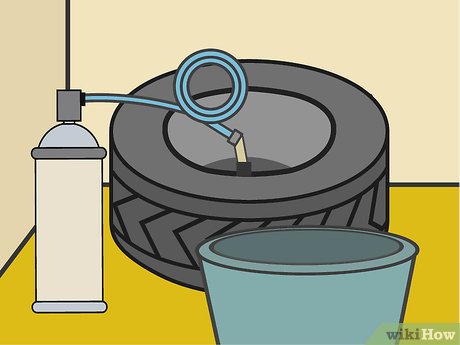
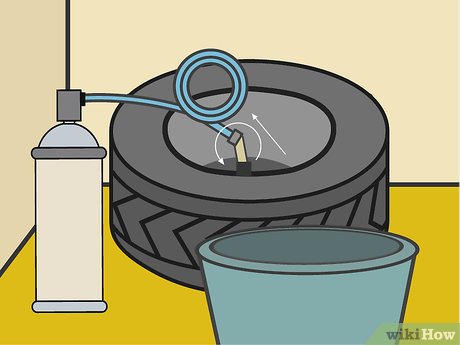







 Surprising facts about aircraft tires not everyone knows
Surprising facts about aircraft tires not everyone knows How to Drive a Farm Tractor
How to Drive a Farm Tractor How to Buy a Used Tractor
How to Buy a Used Tractor How to Drive a Tractor
How to Drive a Tractor Strange: Pumping car tires with fire
Strange: Pumping car tires with fire How to Put Air in a Tire
How to Put Air in a Tire